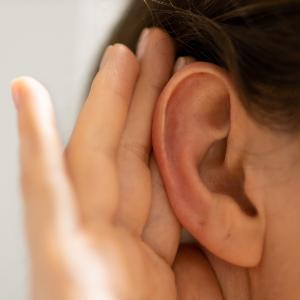2024-03-06 ミュンヘン大学(LMU)

What happens to nerve fibers when only one ear is trained? | © IMAGO / Panthermedia / Audrey Popov
◆新たな研究では、感覚刺激がミエリン層の形成に与える影響が明らかにされ、ミエリン化は個々の神経繊維で行われることが示された。この発見は、総合的なトレーニングが脳の機能に重要であることを示唆している。
<関連情報>
- https://www.lmu.de/en/newsroom/news-overview/news/hearing-study-each-nerve-fiber-trains-on-its-own.html
- https://www.pnas.org/doi/10.1073/pnas.2316439121
環境音刺激は、ミエリンの放射状成長を軸索ごとに制御することで、軸索伝導速度を調整する Ambient sound stimulation tunes axonal conduction velocity by regulating radial growth of myelin on an individual, axon-by-axon basis
Mihai Stancu, Hilde Wohlfrom, Martin Heß, +2, and Conny Kopp-Scheinpflug
Proceedings of the National Academy of Sciences Published:March 5, 2024
DOI:https://doi.org/10.1073/pnas.2316439121
Significance
Myelin ensures fast and reliable conduction of action potentials along axons. Once myelin in the central nervous system is lost due to disease, injury, or aging, remyelination efforts by proliferating oligodendrocyte precursor cells occur, but often remain incomplete. Therefore, reaching and maintaining optimal myelination through sensory or social experience forms a crucial equilibrium. Using the auditory system as a model, the present work shows that activity-dependent myelination occurs at the level of individual axons and that activity in one input channel, i.e., one ear, contributes to proper myelination of activated axons. However, activity in one input channel cannot compensate for activity deficits in another, thereby causing imbalanced myelination and mismatched auditory temporal processing.
Abstract
Adaptive myelination is the emerging concept of tuning axonal conduction velocity to the activity within specific neural circuits over time. Sound processing circuits exhibit structural and functional specifications to process signals with microsecond precision: a time scale that is amenable to adjustment in length and thickness of myelin. Increasing activity of auditory axons by introducing sound-evoked responses during postnatal development enhances myelin thickness, while sensory deprivation prevents such radial growth during development. When deprivation occurs during adulthood, myelin thickness was reduced. However, it is unclear whether sensory stimulation adjusts myelination in a global fashion (whole fiber bundles) or whether such adaptation occurs at the level of individual fibers. Using temporary monaural deprivation in mice provided an internal control for a) differentially tracing structural changes in active and deprived fibers and b) for monitoring neural activity in response to acoustic stimulation of the control and the deprived ear within the same animal. The data show that sound-evoked activity increased the number of myelin layers around individual active axons, even when located in mixed bundles of active and deprived fibers. Thicker myelination correlated with faster axonal conduction velocity and caused shorter auditory brainstem response wave VI-I delays, providing a physiologically relevant readout. The lack of global compensation emphasizes the importance of balanced sensory experience in both ears throughout the lifespan of an individual.


